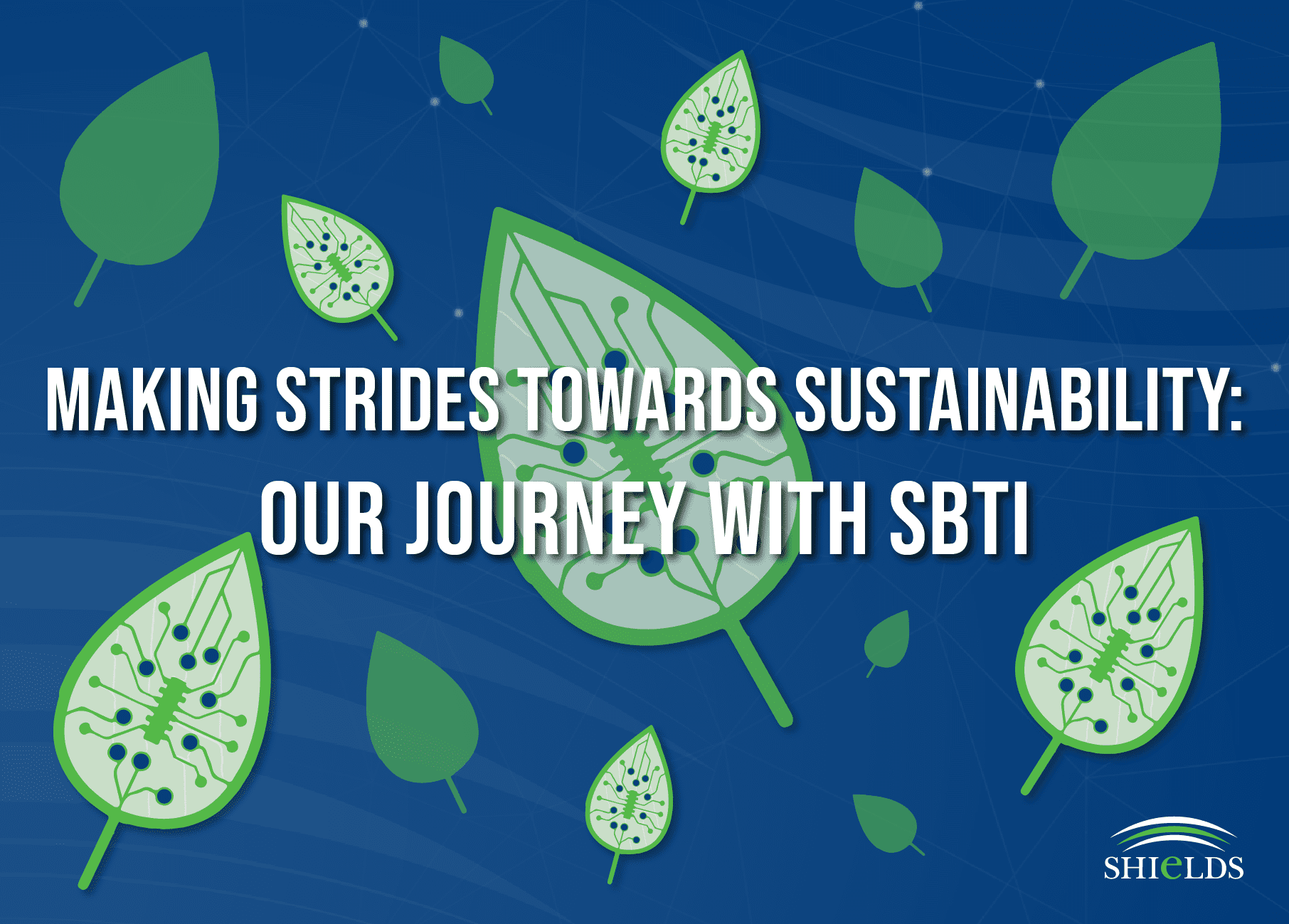How we’re progressing on ESG, and what we’re doing to help networks achieve their own SBTi targets
At Shields in 2020, we set ourselves the target of reducing our Scope 1 and 2 carbon emissions by 42% in a decade. It was a big ask – here’s how we’re getting on, what we’re doing to make more progress, and how that involves making your network greener too.
In an era where the whispers of our planet have turned into urgent calls for action, the dialogue around sustainability has never been more critical.
Around 20% of major business decisions now hinge on Environmental, Social and Governance (ESG) criteria. Stakeholders are increasingly prioritising sustainability, net zero targets have been set, and operationalising the United Nations Paris Agreement’s goal to limit global warming to 1.5°C above pre-industrial levels has taken centre stage.
As a telecoms recycling and resale platform, we’re not just participating in the conversation, we’re committed to leading by example. So on this page, we outline our progress with our own Science Based Targets Initiative (SBTi), and offer networks support to thrive with their own.
Understanding the initiative – what is the SBTi and why does it matter?
The Science Based Targets Initiative (SBTi) is a partnership between the CDP, the United Nations Global Compact, World Resources Institute (WRI), and the World Wide Fund for Nature (WWF). It compels companies to find ways to be kinder to the planet from the top down, supply chain included.
The SBTi champions science-based target setting to help reduce the likelihood of the planet warming up by more than 1.5°C on pre-industrial temperatures. It’s also a powerful way of boosting companies’ competitive advantage in the transition to a low-carbon economy.
Within the telecom sector, there’s a universal stride towards achieving net-zero emissions before 2040, a goal that necessitates looking beyond internal operations to encompass the entire supply chain.
Innovative solutions like ours not only help reduce carbon emissions but also support our partners in achieving their environmental goals – but more on that in a moment.
Shields’ progress towards SBTi goals
At Shields, we’re proud to be on track to reduce our scope 1 and 2 emissions by 42% from 2020 to 2030.
This achievement stems from several strategic actions, including transitioning all our sites to green energy, cutting down gas consumption, and upgrading to more energy-efficient equipment and LED lighting.
Next on the list to tackle is our vehicles and fuel consumption, globally. We’re constantly monitoring and measuring the footprint of our supply chain too.
Our efforts so far significantly outpace our physical footprint, especially through the carbon savings we facilitate for our customers. In 2023 alone, our Marketplace solution led to a staggering 89% reduction in CO2e compared to new equipment from Original Equipment Manufacturers (OEMs), translating to a total of 7,219MT CO2e avoided.
We’re actively working to enhance these figures, inviting more networks to join us in making their own supply chains cleaner, greener, and more efficient through the new GSMA Equipment Marketplace.
For more tips on taking back control of your network’s supply chain, click here.
The Role of GSMA Equipment Marketplace in Achieving SBTi Targets
The new GSMA Equipment Marketplace is the first global digital platform that streamlines buying and reselling pre-owned network equipment, as well as the reuse and management of your existing network assets. It’ s ingeniously designed to support networks in their SBTi goals through:
Reuse:
Facilitating the redeployment of decommissioned assets within your network, ensuring transparency, efficiency and significant savings in carbon and costs.
Did you know the average emissions savings networks make by sourcing through GSMA Equipment Marketplace rather than the OEM is a whopping 16.83CO2e/kg per product?
In 2023, 5,627 MT of CO2e was avoided through our customers’ own redeployment within their own networks. Meanwhile, a further 48 MT CO2e was avoided through our customers’ re-use within their groups.
Resale:
Offering a user-friendly platform for selling network equipment outside its use within your network, promoting circularity and generating additional revenue.
In 2023, another 1,544 MT of CO2e was avoided through our customers’ market purchases within GSMA Equipment Marketplace, amounting to €44.5 million in benefits.
Recycle:
Ensuring safe recycling of equipment past its useful life, with a focus on recouping costs through precious metals extracted.
In 2023, we recycled more than 4 million kilograms of telecoms equipment that was past its useful life. Recouping the costs of the precious metals extracted, our network customers generated nearly €1.8million in revenue.
We don’t just keep these statistics to support our own agenda in promoting the circular economy either; networks get to track your savings and revenues generated too. The comprehensive reporting section within GSMA Equipment Marketplace facilitates networks to monitor your environmental impact, showcasing CO2 emissions saved through responsible asset management.
So, if you want to reduce your carbon footprint, cut operating costs, generate more revenue, AND boost your brand at the same time, be sure to leverage our CO2 savings statistics to bolster your ESG narrative.
The impending shift from optional to mandatory ESG reporting
With Scope 3 emissions accounting for over 80% of telecoms operators’ CO2e footprints, the importance of comprehensive environmental performance reporting cannot be overstated. The Corporate Sustainability Reporting Directive (CSRD) is set to revolutionise how telecoms networks report their environmental performance. And GSMA Equipment Marketplace offers an unparalleled opportunity to reassess and improve your equipment supply chain comprehensively.
(For more information on the Corporate Sustainability Reporting Directive and what the CSRD means for telecoms networks, click here.
Our reporting dashboard gives you a clear overview of your network’s ESG performance. What’s more, achieving annual CO2e savings of 5000MT earns networks the Shields Avoidance Certificate, a testament to the substantial environmental impact reduction facilitated by sourcing through GSMA Equipment Marketplace rather than OEMs.
How well is your network embracing the circular economy?
The need for a circular economy is pressing, especially as networks aim to meet the UN’s ambitious emission reduction targets.
At Shields, we’re committed to extending product life through reuse, minimising waste through digitalisation, and enhancing mobile network energy efficiency by modernising legacy equipment. Our GSMA Equipment Marketplace approach isn’t just about meeting regulatory requirements; it’s about fundamentally changing how networks – and we – think about and engage with our planet.
Interested in making your network more sustainable? Contact us for a demo today and join us in our journey towards a greener future.



